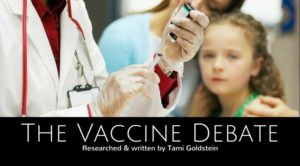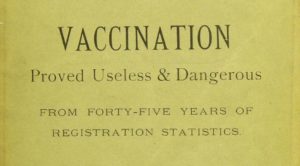All links on this page provide information on live viral vaccine shedding:
- Measles Outbreak among Vaccinated High School Students -- Illinois
From December 9, 1983, to January 13, 1984, 21 cases of measles occurred in Sangamon County, Illinois.* Nine of the cases were confirmed serologically. The outbreak involved 16 high school students, all of whom had histories of measles vaccination after 15 months of age documented in their school health records. Of the five remaining cases, four occurred in unvaccinated preschool children, two of whom were under 15 months of age, and one case occurred in a previously vaccinated college student. The affected high school had 276 students and was in the same building as a junior high school with 135 students. A review of health records in the high school showed that all 411 students had documentation of measles vaccination on or after the first birthday, in accordance with Illinois law.
Source: Centers for Disease Control - 25 confirmed mumps cases at University of Minnesota
State health officials confirmed 25 cases of mumps at the University of Minnesota Twin Cities campus. Experts say the amount of cases is consistent when compared to other universities that have had similar mumps outbreaks. All the cases at the university have been among those who were previously vaccinated. All the cases have been mild. Common symptoms for mumps include fever, headache, and swollen salivary glands under the ears.
Source: FOX 9 Minneapolis-St. Paul - Vaccinated Individuals Spread Disease
Scientific evidence demonstrates that individuals vaccinated with live virus vaccines such as MMR (measles, mumps and rubella), rotavirus, chicken pox, shingles and influenza can shed the virus for many weeks or months afterwards and infect the vaccinated and unvaccinated alike.
Source: The Weston A. Price Foundation - Varicella Zoster Virus DNA at Inoculation Sites and in Saliva After Zostavax Immunization
Analysis of 36 individuals over age 60 years who were immunized with Zostavax revealed varicella zoster virus (VZV) DNA in swabs of skin inoculation sites obtained immediately after immunization in 18 (50%) of 36 subjects (copy number per nanogram of total DNA, 28 to 2.1 × 106) and in saliva collected over 28 days in 21 (58%) of 36 subjects (copy number, 20 to 248).
Source: Oxford Journals - The Journal of Infectious Disease - Acellular pertussis vaccination enhances B. parapertussis colonization
An acellular whooping cough vaccine actually enhances the colonization of Bordetella parapertussis in mice; pointing towards a rise in B. parapertussis incidence resulting from acellular vaccination, which may have contributed to the observed increase in whooping cough over the last decade.
Source: Proceedings of the Royal Society Biological Sciences - Baboon study reveals shortcoming of Pertussis Vaccine
In 2012 the number of U.S. whooping cough cases rose to 48,277—the most since 1955. The resurgence has led researchers to reexamine the workings of the current vaccine, which uses bits and pieces of the Bordetella pertussis bacterium to stimulate the production of antibodies.
Source: Scientific American - The vaccinated can shed measles live virus without showing symptoms
Serological evidence indicates that measles virus (MV) could circulate in seropositive, fully protected populations. Among individuals fully protected against disease, those prone to asymptomatic secondary immune response are the most likely to support subclinical MV transmission.
Source: Laboratoire National de Santé, Luxembourg, Germany - Influenza vaccine strains replicate in the nasopharynx and can be shed up to 28 days later
The FluMist influenza vaccine strains replicate in the nasopharynx and can be recovered and cultured from respiratory secretions of vaccinated individuals (shed) up to 28 days later.
Source: FDA Vaccines, Blood & Biologics - Rotavirus vaccines: viral shedding and risk of transmission
Rotavirus causes gastroenteritis in almost all children by 5 years of age. Immunity to rotavirus is incomplete, with potential for recurrent infections occurring throughout life. Live rotavirus vaccines have been developed for the protection of children from severe wildtype rotavirus infections.
Source: The Lancet, Volume 8, No. 10, p642–649, October 2008 - Rotavirus vaccine-derived shedding and viral reassortants
EVALUATION OF: Donato CM, Ch’ng LS, Boniface KF et al. Identification of strains of RotaTeq rotavirus vaccine in infants with gastroenteritis following routine vaccination.
Source: Division of Viral Diseases, National Center for Immunization and Respiratory Diseases, Centers for Disease Control and Prevention - An evaluation of measles serodiagnosis during an outbreak in a vaccinated community
During an epidemic of measles in a vaccinated community, five serodiagnostic tests were performed on 67 persons on whom clinical and epidemiological data were available. The test found most suitable for a rapid diagnosis of measles infection was an Enzyme Linked Immuno Sorbent Assay for the detection of specific IgM antibodies.
Source: Cadham Provincial Laboratory, Winnipeg, Manitoba - Detection of fecal shedding of rotavirus vaccine in infants following their first dose of pentavalent rotavirus vaccine
Studies on rotavirus vaccine shedding and its potential transmission within households including immunocompromised individuals are needed to better define the potential risks and benefits of vaccination. This study examined fecal shedding of pentavalent rotavirus vaccine (RV5) for 9 days following the first dose of vaccine in infants between 6 and 12 weeks of age.
Source: Department of Pediatrics, Columbia University, New York, NY 10032, USA - Whooping cough resurgence due to vaccinated people not knowing they're infectious?
The dramatic resurgence of whooping cough is due, in large part, to vaccinated people who are infectious but who do not display the symptoms, suggests a new study.
Source: Santa Fe Institute - National, State, and Selected Local Area Vaccination Coverage Among Children Aged 19–35 Months
Large and small outbreaks have occurred and continue to occur in highly vaccinated populations in the U.S and around the world. In 2013, the U.S. was 91.9% compliant with the MMR according to the CDC, well above the 80% coverage of 2-year olds necessary to prevent sustained measles outbreaks.
Source: CDC Morbidity and Mortality Weekly Report, Aug. 29, 2014, Vol. 63, No. 34


